
Strawberry dressing in early spring and later on in subsequent phases of development is an important stage. If you do not feed it on time or skip feeding at all, the crop will lag behind in time and will not differ in its abundance. Spring is especially important when the season is just beginning. In addition, during this period it is necessary to carry out a number of activities necessary for the proper development and fruiting of the culture.
Content
Features of basal fertilizer
Care for flowering strawberries is as follows: top dressing, proper watering, pruning mustache and pollination. To take care of the culture correctly, it is necessary to disassemble each stage separately.
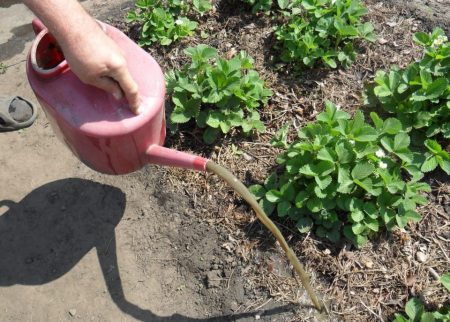
Fertilizer scheme by age:
- 1 year of development - the berry does not fertilize. When planting, strawberries receive enough nutrition and mineral elements, which are enough for the season;
- 2 year - it is necessary to fertilize the berry with mineral and organic fertilizers;
- 3 year - the culture needs only fertilizing with minerals;
- 4 year - needs organic and mineral fertilizers.
That is, according to the age principle, fertilizers must be alternated annually.
The first strawberry fertilizer is carried out in early spring, around mid-April, when the snow has just melted and the leaves have not yet blossomed. At this time, nitrogen-containing fertilizers should be applied. Before top dressing, it is recommended to trim the bushes. This method will not disturb the plant several times. Popular mineral complexes are used for top dressing, you can use folk recipes for preparing the solution.
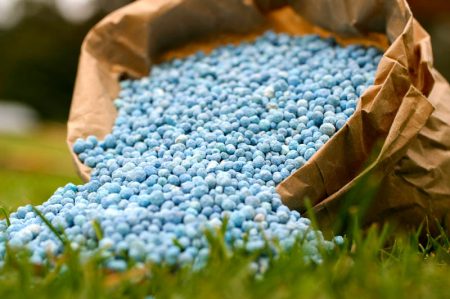
Mineral complexes:
- 1 tbsp. l ammonium sulfate + 2 tbsp. mullein + 10 l of water. Mix the dressing well. Add 1 liter under the berry bush;
- 1 tbsp. l nitroammofosk + 10 l of water. Add 0.5 l under the berry bush;
- pour a bucket of fresh nettle in a bucket of water, preferably warm and insist 3-4 days. For radical top dressing, the mixture can not be filtered. It is bred in a proportion of 1:10 l with water. Watering strawberries is necessary depending on its size from 1 liter to 0.5 liter. on 1 plant. For foliar, it will be necessary to strain the nettle solution and dilute 1:20 l with water;
- Feeding, based on mullein or chicken droppings, is perfect. To prepare them, you need to take 1 part of the litter or mullein and pour 10 liters of water, insist the solution for 3-4 days. Water strawberry bushes with a dosage of 0.5 l of solution per 1 bush.
To make root top dressing more effective, it is best to carry out foliar top dressing at the same time. This will allow the bush to receive several times more nutrition and useful elements.
Spring foliar top dressing
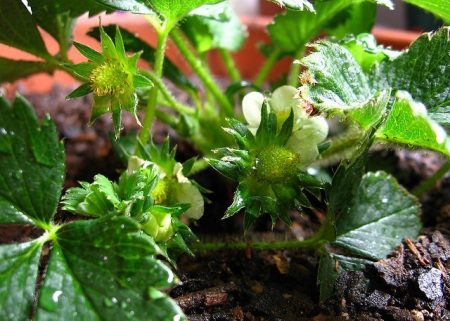
Spend in cloudy dry weather, the best time is early morning or late evening.
The rules of foliar feeding:
- carried out after heavy irrigation of strawberries;
- spraying begins with young shoots and leaves;
- better yields can be expected if strawberries are fertilized during the flowering period;
- it is most effective in spring to use top dressing with the addition of boric acid.
The best option for foliar spring dressing is a solution: 1 tsp. boric acid + 30 drops of iodine + 1 tbsp. ash + 10 l of water.
Top dressing during the flowering period
The second time the plant is fed, when it enters the flowering phase. In time, this is approximately the beginning of June, when strawberries begin to bloom. Strawberries need potassium at this time. Potassium top dressing helps to improve the appearance of the bushes and get more sweet berries. In addition, the harvest will be several times larger than if you ignore this event. In addition, potassium contributes to a longer storage of strawberries.
When a plant lacks this element, the ends of the leaves begin to turn brown. If you do not feed in time to correct the situation, you can lose absolutely the entire crop.
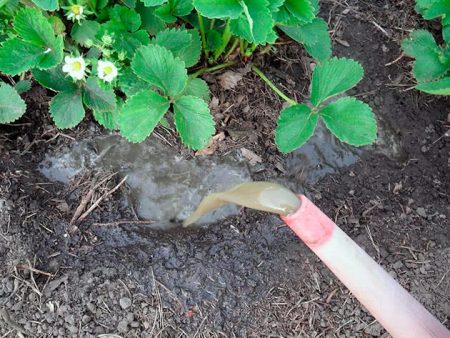
Popular top dressing:
- 1 tsp potassium nitrate + water 10 l. The resulting product is watered all berry bushes with a dosage of 0, 5 l;
- for foliar top dressing, a 0.02% zinc sulfate solution is used;
- at the beginning of the flowering phase, it is good to use a mullein solution.
The use of such dressings makes it possible to obtain large berries, if an extra dressing is carried out when the plant has already faded. For her use any complex fertilizer, which contains the maximum number of trace elements.
Folk fertilizer methods
There are several effective ways to fertilize berries, which are considered folk. Compost is great for this. It is simply laid around the plant around the circumference, when moisture gets on it, nutrients enter the root system.
Ash
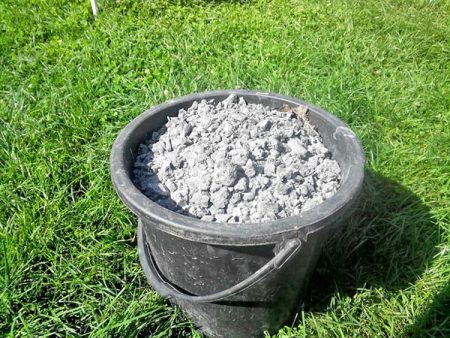
Coniferous and woody, as well as ash obtained by burning grapevines, sunflowers, potato tops, has a huge amount of useful trace elements in its composition. Ash is used in early spring. A handful of ash must be added to the hole when planting berry bushes.
For radical top dressing, it is recommended to make an ash remedy. Insist 1 liter of ash in 10 liters of water, water each berry bush with 1 liter of the product. The ash from diseases helps very well. If damaged or dry leaves appear on the bush, you need to powder the bush with ash. About 15 g of ash should be used for each infected bush.
Iodine
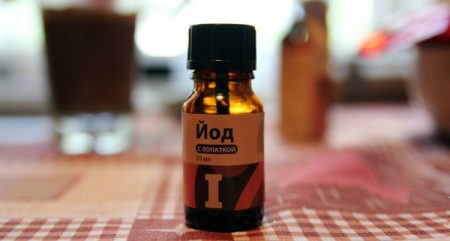
Iodine has antiseptic effects. It is used not only for treatment, it is great as a fertilizer. Spraying with iodine solution is done before the flowering plants. Next, the procedure must be repeated 3 times with a time interval of 10 days. For a solution, you need to dissolve 5-10 drops of iodine in 10 l of water. Dosage must be observed, otherwise, plants can get burns.
Bread crusts
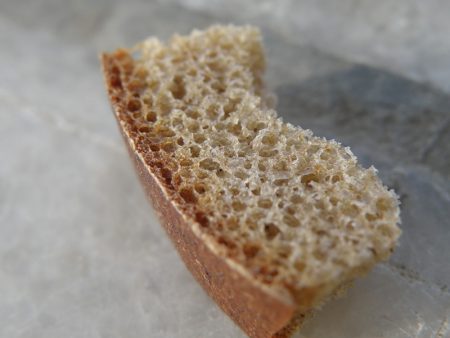
The growth of the bushes favorably affects the yeast, in abundance they are in rye bread. For the solution you need 1 loaf of rye bread or crusts, soak in 1 liter of warm water. Give it a good ferment for 7 days. This mixture is quite concentrated; before use, it is diluted in 10 liters of water.
Boric acid
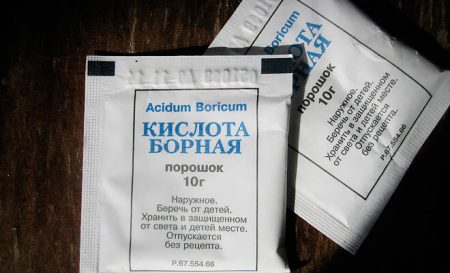
It is very useful to feed the berry with fertilizer based on boric acid during the budding period. It stimulates the setting of buds. To prepare the product, 2 g of boric acid is dissolved in 10 l of water, 1 l of ash and 2 g of potassium permanganate are added. The solution is sprayed the entire bush from all sides.
Yeast
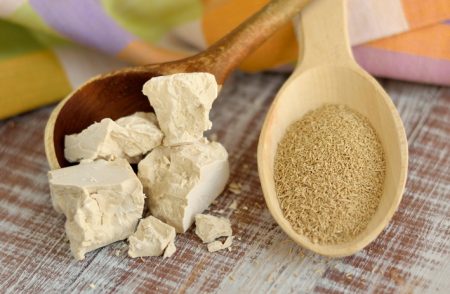
Yeast top dressing is also very useful. Thanks to her, strawberry bushes get sick less often and grow faster. For fertilizer, you need to soak 200 g of fresh yeast in 0.5 l of water and leave for 20 minutes. Water should be warm. After which the mixture is poured into 9 liters of water, the berry is watered abundantly.
You can use dry baking yeast. The mixture is prepared as follows: in 10 liters of water dissolve 1 sachet of yeast and 2 tbsp. l sugar and insist mixture for 2 hours. Top dressing is introduced into the soil at an air temperature of +15 degrees.
Spoiled milk

To fill the soil with phosphorus, sulfur, potassium and normalize the acidity of the soil, you can carry out sour-milk dressing. Before use, the sour milk product is diluted with water in a ratio of 1: 2. Milk is introduced into the soil at a distance of 10 cm from the root system of the plant. This method helps to increase yield and disease resistance. The solution can be applied by the root method, as well as spraying.
Mineral fertilizers
There are complex mineral fertilizers and single-component. The application of one-component fertilizers means that only one useful element, for example, nitrogen, potassium or phosphorus, enters the soil. The introduction of complex or complex top dressings into the soil carries the ingress of several important elements into the soil, together with which substances such as copper, boron, iron, calcium.
Such fertilizers are produced in granular, dry and liquid form. You can use them for root and foliar top dressing.
The next berry fertilizer is carried out approximately in mid-April, a constant air temperature at this time should be set not lower than +16 degrees. Urea must be added to the soil. This is very important, because, at a lower temperature, strawberries do not absorb nitrogen well. For this top dressing, the main thing is to properly dilute the solution. For 10 l of water is added only 1 tbsp. l urea. Each bush is watered with a dosage of 0.5 l.
Mineral fertilizers should be cultivated clearly according to the instructions recommended by the manufacturer. Otherwise, a more concentrated solution can burn the plant, and a weaker one will not leave an effect.
Organic fertilizer
They have undeniable advantages. They are completely safe, environmentally friendly and accessible to absolutely everyone.
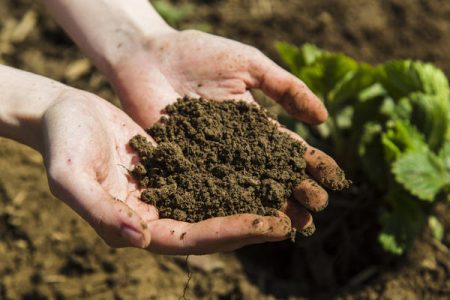
One such remedy is chicken droppings. In early spring, its solution is applied to the soil only 1 time in 2-3 years. Such fertilizer supplies the soil with a huge amount of useful macro and micronutrients. The product based on litter is prepared in a ratio of 1: 2 with water. It mixes well. For a working solution of 1 liter of such a mixture is diluted with 10 liters of water. It is not applied under the bush itself, but at a distance of 8-10 cm.
Mineral organic dressing
The greatest efficiency is achieved when feeding plants with mineral-organic fertilizing. They include all the nutrients and trace elements needed by the plant. They are brought in at a time when the leaves begin to bloom.
Mineral - organic complexes:
- 1 tbsp. l Ammonium sulfate diluted in 10 liters of water. Water with a dosage of 1 liter;
- 1 tbsp. l carbamide + 0.5 tbsp. ash + 0.5 tsp boric acid + 3 g potassium permanganate. All components are dissolved in 10 l of water. Water with a dosage of 0.5 l. on 1 bush.
Remove unwanted mustache

Whiskers on strawberries grow very quickly, so if you do not follow them, after a while the strawberry plantings will be very thickened. If you cut the mustache on time, you can get high-quality material for planting. To increase strawberry productivity, the extra mustache must be removed.
For planting material, you must choose the first rosette of the mustache. They must be lightly sprinkled with earth so that they take root. After complete rooting, the whisker with subsequent outlets should be cut off.In late August, you can already plant strawberries in a permanent place.
Mustache pruning rules:
- categorically it is impossible to pick off a strawberry mustache, together with them you can tear out the plant completely or damage the roots;
- to carry out processing in dry cloudy weather. You can also trim early in the morning or late in the evening. In the heat, pruning a plant is not recommended. At high temperatures and the scorching sun, it can be stressed, and in wet weather, infection with fungal or infectious diseases is possible;
- cut a mustache at a distance of 10 cm from the native bush;
- pruning is done with a sharp pruner or scissors.
If you follow all the recommendations, the plant will not hurt and will immediately adapt after the procedure.
Watering during flowering
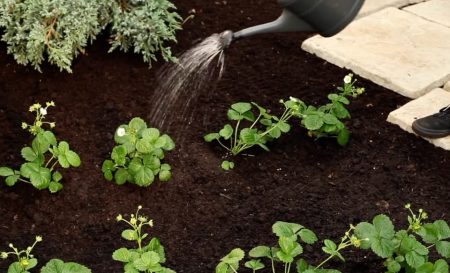
Watering in the flowering phase for strawberries plays a crucial role. At this point, she needs moderate and regular watering. A lack of moisture can adversely affect the fruits, they will not be able to pour during. Excessive hydration is also not desirable. In this case, the berry may rot. Therefore, in watering, you must adhere to the golden mean.
In particular, it all depends on climatic conditions. If a large amount of rainfall occurs during this time, strawberries do not need to be watered at all. If the weather is dry and hot, the berry should be watered after 3 days.
Water strawberries need water, the temperature of which is close to the temperature of the soil. Cold water is not recommended. The watering process is carried out strictly under the root, while you need to make sure that the roots of the plant are not exposed.
Strawberry Pollination
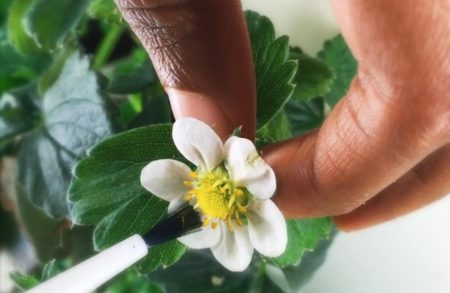
Defective pollination can be the result of rains, fogs, lower air temperatures and entails the receipt of small deformed berries. To help strawberries, you can resort to manual pollination. To do this, use a sponge or soft cloth to transfer pollen from one flower to another. If the size of the strawberries is impressive, you can pollute using a fan.
Another way to pollinate strawberries is with a honey solution. 1 tbsp. l honey should be diluted with 1 liter of warm water and sprayed with a solution of bushes. This will attract pollinating insects, which will help pollination naturally.
Each of the activities described above is of great importance in the development of strawberries. If you take care of the crop correctly and do not miss important processes, you can get a crop of delicious large berries from strawberry beds every year.

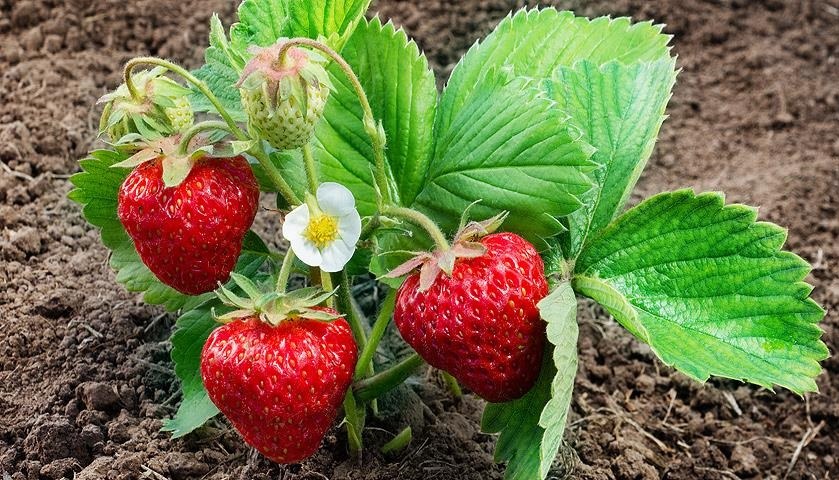
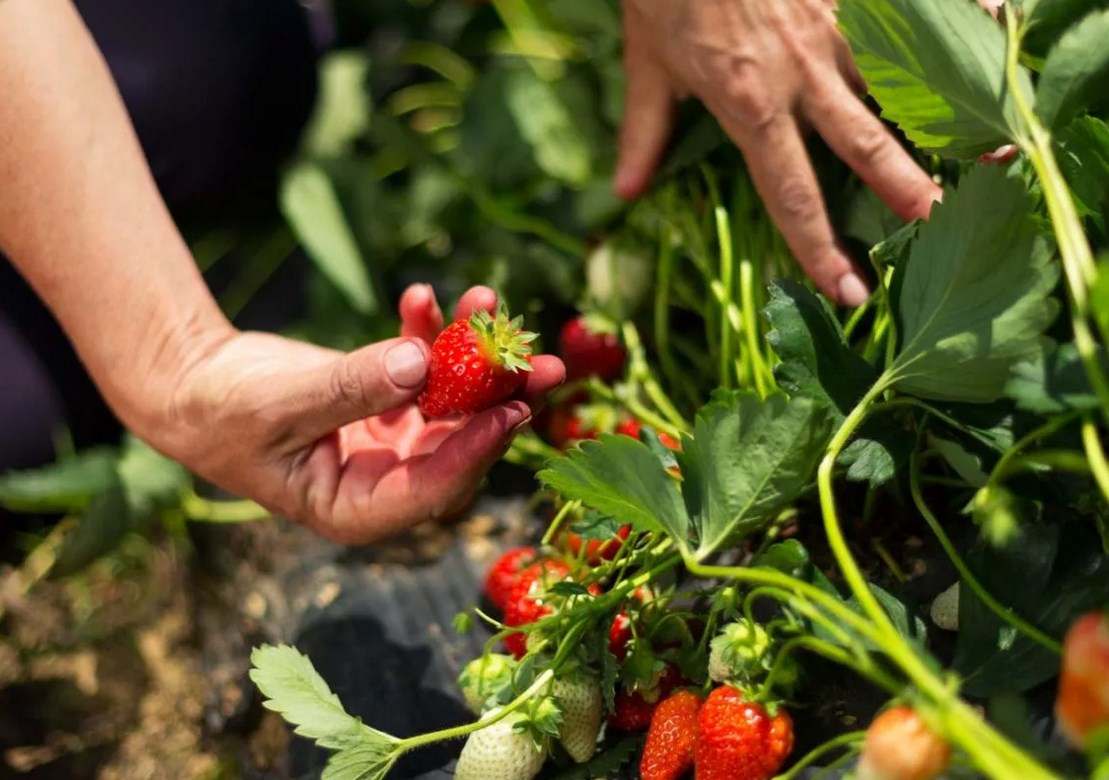
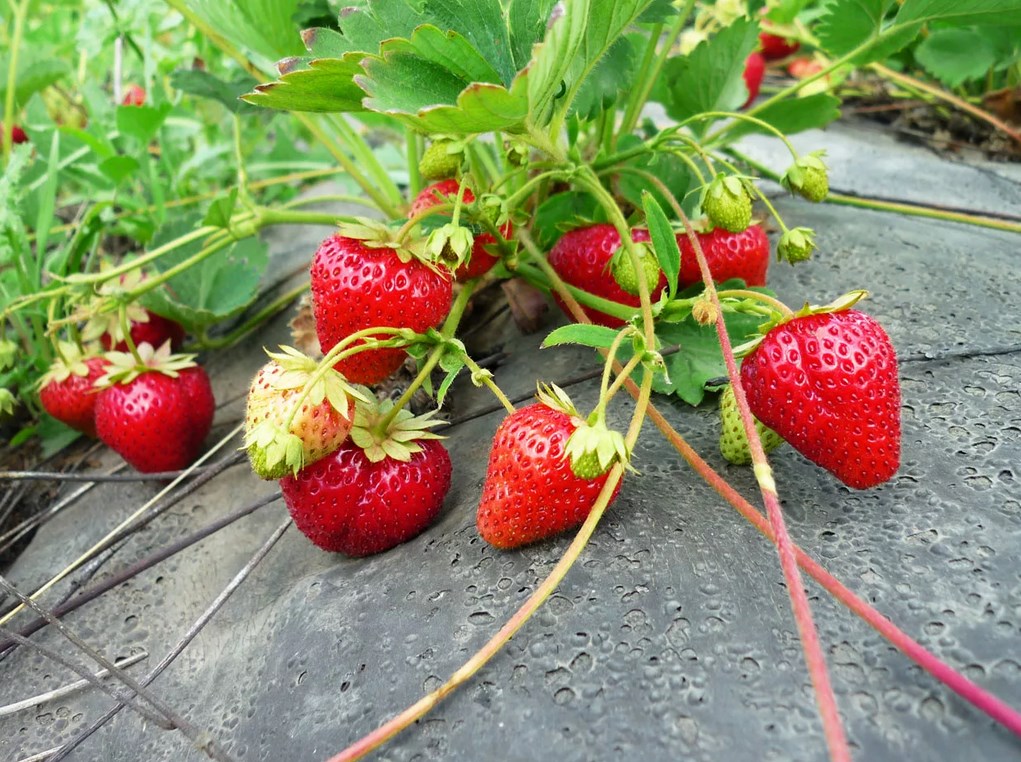
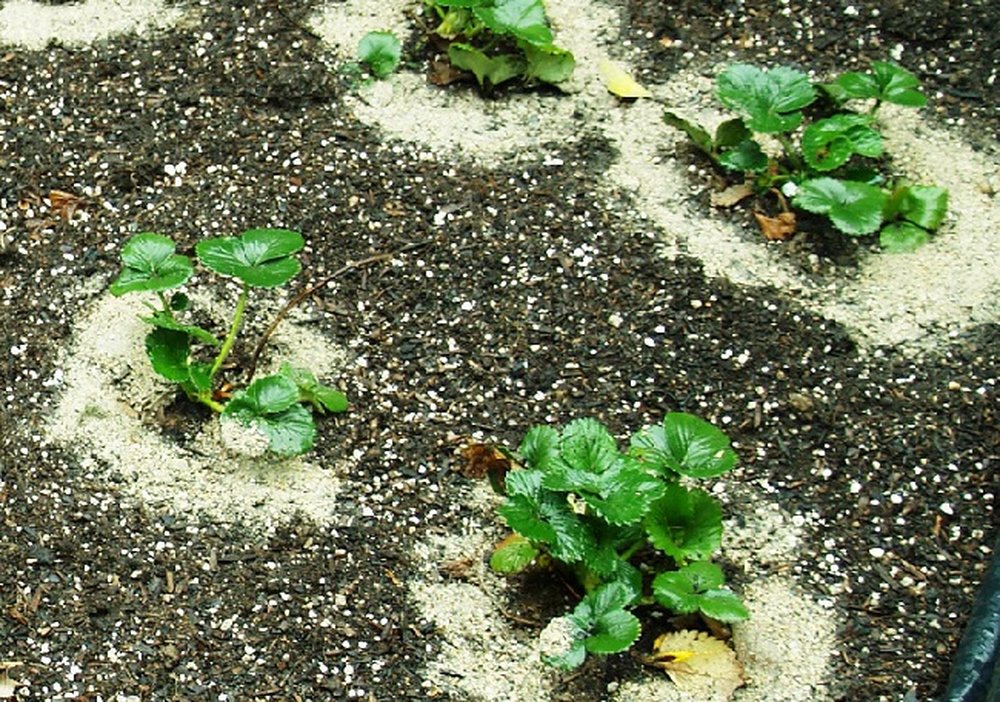 When to plant strawberries for seedlings from seeds in 2024
When to plant strawberries for seedlings from seeds in 2024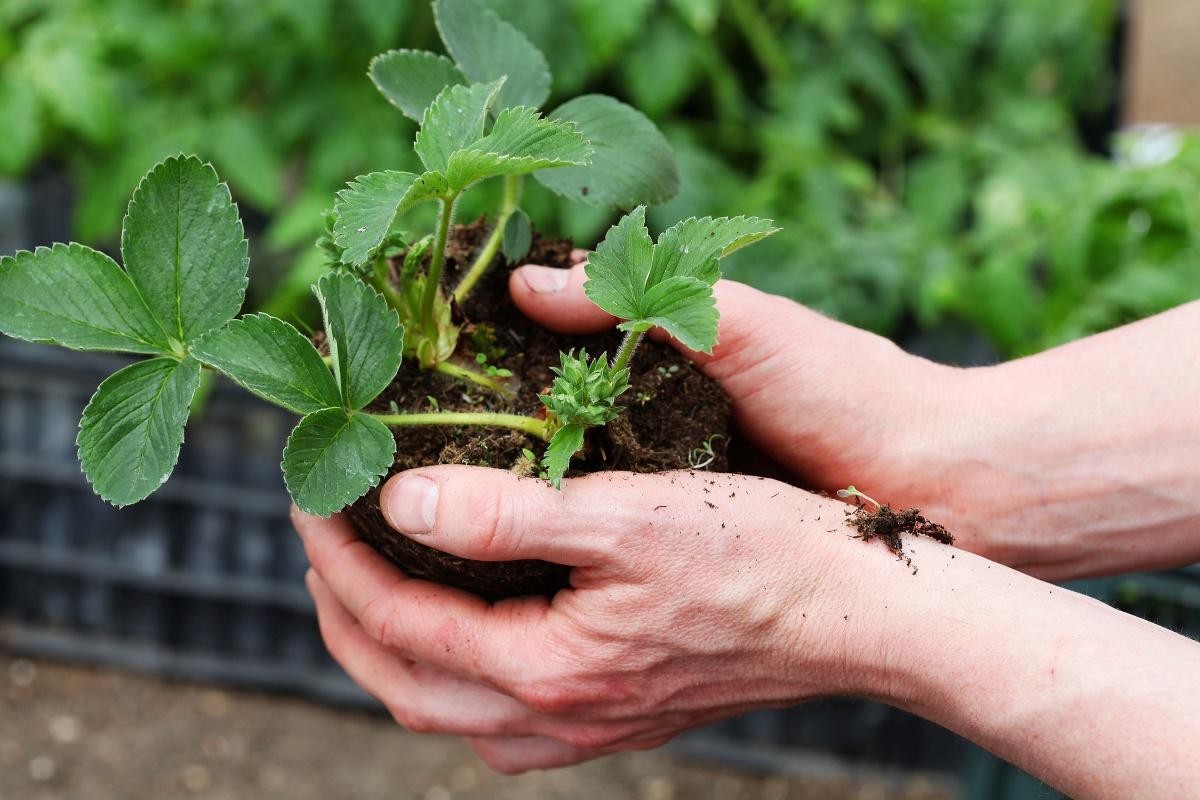 What month is better to choose for a strawberry transplant in autumn
What month is better to choose for a strawberry transplant in autumn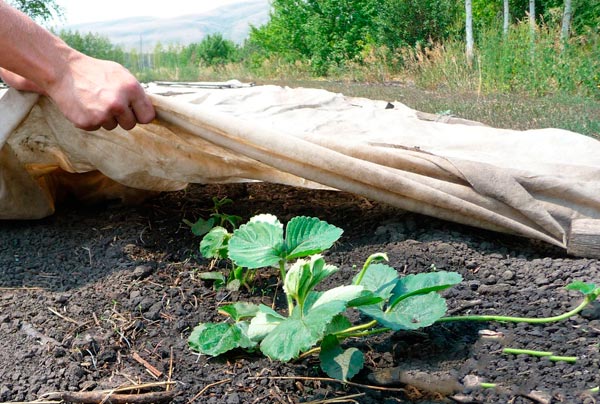 How to cover strawberries for the winter
How to cover strawberries for the winter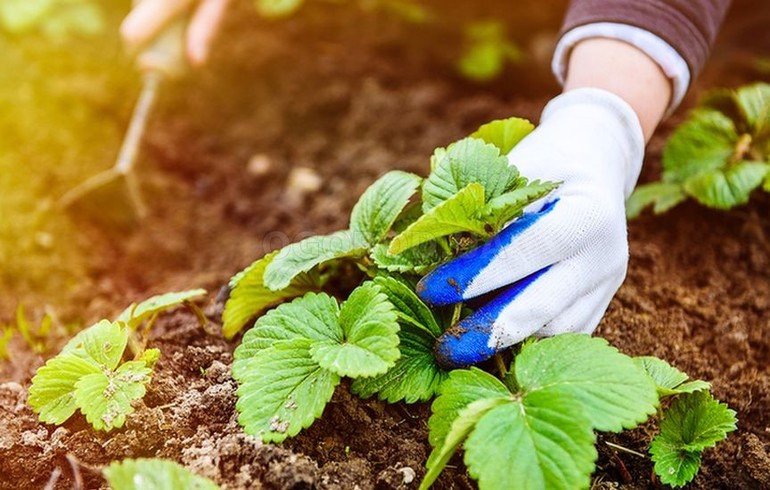 Proper care and pruning strawberries in the fall in the suburbs
Proper care and pruning strawberries in the fall in the suburbs
Margarita Vasilievna
Nutrition for Strawberries